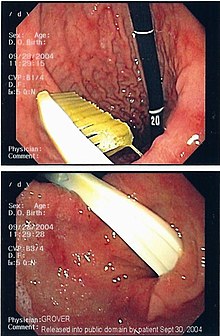Ingested Foreign Bodies
- Foreign bodies can enter the alimentary tract through the mouth or rectum.
- Young children are particularly prone to putting objects in their mouths, ears, and nostrils.
- Ingested magnets can cause severe damage and medical emergencies.
- Coins and batteries are common foreign bodies that can cause serious complications.
- Laparoscopic removal of ingested foreign bodies, such as fish bones, may be necessary in some cases.
- Foreign body aspiration, particularly in children, can lead to respiratory distress and requires immediate attention.
- The management of ingested foreign bodies in the gastrointestinal tract is crucial to prevent complications.
Intraocular Foreign Bodies
- Airborne particles can lodge in the eyes and cause allergies.
- Larger objects can also get lodged in the eye, often due to hammering accidents.
- Occupational exposure can lead to corneal foreign bodies.
- Intraocular foreign bodies can cause damage to the eye and may require surgical intervention.
- Corneal abrasions and foreign bodies are common eye injuries that need proper management.
- Prompt removal and treatment of intraocular foreign bodies are essential to prevent vision loss.
Skin Foreign Bodies
- Splinters are common foreign bodies that can penetrate the skin.
- Staphylococcus aureus infection can cause boils around foreign bodies.
- Tetanus prophylaxis may be necessary for certain skin foreign bodies.
- Foreign bodies embedded in the skin should be properly managed to prevent infection and complications.
- First aid and proper treatment are necessary for rectal foreign object removal.
- External auditory canal foreign body removal requires specific management practices and can have positive outcomes.
Nasal Foreign Bodies
- Nasal foreign bodies can cause discomfort and potential complications if not promptly removed.
- Iatrogenic displacement of a foreign body into periapical tissues can occur during dental procedures.
- Self-inflicted male urethral foreign body insertion can lead to complications and requires endoscopic management.
- Vaginal foreign bodies may require medical intervention and proper removal.
- A study published on PubMed discusses foreign body reactions in the oral tissues.
Gastrointestinal Foreign Bodies in Animals
- Foreign bodies can pass through the gastrointestinal tract and migrate into the pancreas.
- Imaging techniques like X-rays can help identify foreign bodies in the gastrointestinal tract.
- Laparoscopic approach can safely remove foreign bodies embedded in the pancreas.
- Gastrointestinal obstruction in small animals can occur due to foreign bodies and requires veterinary attention.
- Linear foreign bodies can cause serious complications and may require surgical intervention.
A foreign body (FB) is any object originating outside the body of an organism. In machinery, it can mean any unwanted intruding object.
| Foreign body | |
|---|---|
 | |
| An endoscopy image of the stomach, showing a foreign body in the form of a toothbrush. | |
| Specialty | Emergency medicine |
Most references to foreign bodies involve propulsion through natural orifices into hollow organs.
Foreign bodies can be inert or irritating. If they irritate they will cause inflammation and scarring. They can bring infection into the body or acquire infectious agents and protect them from the body's immune defenses. They can obstruct passageways either by their size or by the scarring they cause. Some can be toxic or generate toxic chemicals from reactions with chemicals produced by the body, as is the case with many examples of ingested metal objects.
With sufficient force (as in firing of bullets), a foreign body can become lodged into nearly any tissue.
foreign body (plural foreign bodies)